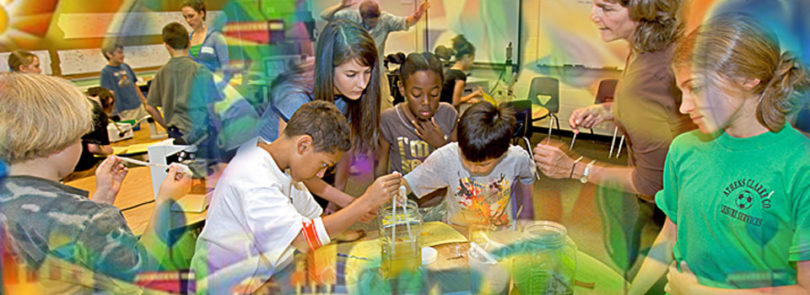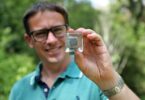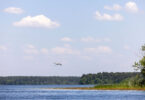Looking at slime under microscopes and building terrariums for pretend organisms are all part of UGA’s Institute of Ecology outreach programs designed to show Georgia’s children how important it is to protect our natural resources. The Eco-Reach program regularly visits schools in the surrounding areas, and Assistant Professor Amy Rosemond, accompanied by lab assistants, participated in Barrow Elementary’s annual Science Olympiad Day.
“Eco-Reach is a student-run organization that focuses on environmental outreach,” said Scott Connelly, Eco-Reach’s coordinator. “Recently we’ve designed activities around wetland ecology, plant and animal adaptations and tropical rainforest conservation.”
Founded in 1998 by UGA Ecology graduate Ellen Sutherland, Eco-Reach begin small, and after just a few visits to schools quickly spread by word-of-mouth to Athens-Clarke County and the surrounding areas. Its primary focus is to interact with young people to raise awareness and enthusiasm for science and environmental issues.
“Right now, we are involved in a three-week ecology unit with elementary school teachers,” said Eco-Reach volunteer Kaua Fraiola. “We are teaching these kids about the ocean, watersheds and pollutants by bringing in live animals and doing hands-on activities.”
Connelly pointed out that Eco-Reach is careful to follow Georgia’s well-defined guidelines to cover each grade. The activities meet state educational guidelines, while working with the interests and needs of the teachers and classes.
“We want to get kids to see that science can be more fun than they thought, and expose students to things that they might not otherwise be exposed to,” said Connelly, who recently won the Institute of Ecology’s Solitary Glove Service Award for all of his outreach work.
Rosemond and student volunteers who work in her lab participated in Clarke County’s David C. Barrow Elementary’s annual Science Olympiad Day. Since 2000, Rosemond has brought her famous “Slime TV” activities to third, fourth and fifth graders annually.
“We bring in freshwater algae that kids see as slimy stuff,” said Rosemond. “When they view it through the microscope, they see how beautiful it is in its cellular structure and complexity.”
Images of the microscopic organisms are projected to a monitor, hence the name “Slime TV.” The students learn how to make their own microscope slides, view them and draw images of what they see. The students also learn about photosynthesis and the importance of algae in lakes, rivers and oceans.
“Seeing the light bulb go off for these children by seeing things they had never seen before is so rewarding,” Rosemond said. “The beauty of microscopy is that it opens a hidden world that the children are amazed by. It’s a wonderful feeling to know you’ve lent a new appreciation for the natural world.”
Rosemond receives thank-you notes from the children each year to express their appreciation. From sentiments that their experience with “Slime TV” was “gnarly,” “awesome,” “cool,” “interesting” and “disgusting” to telling Rosemond they want a microscope for their birthday, this is why she says they will go back year after year.







